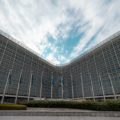by Antonio Acunzo

In the last two to three years, the global pandemic, the disruption in the supply chains and the Russian invasion of Ukraine are among the main factors that have strongly contributed to redrawing the map of geopolitical and economic relations on a global level, changing priorities both of a geopolitical and a geoeconomic type.
In fact, globalization is no longer a phenomenon driven only by the economy but fits into a new context where political risk dominates: "Freedom is more important than free trade", declared Jens Stoltenberg, secretary of NATO, and with this principle the new globalization is reconfigured on the basis of new relations between countries perceived as "friends" and of new political, economic and military alliances as a consequence of the complex fracture that today opposes the front of Western countries at the front of the new Russian-Chinese alliance.
A first reaction, in comparison between the two main economic powers, USA and China, was that of reshoring by American companies in China that have progressively limited or suspended expansion and investments are re-transferred their production capacity to the USA, more than offsetting the initial costs with the projection of long-term benefits, such as reduced lead times, reduced tariffs customs, better product quality made in the USA, more effective distribution logistics.
A second reaction was that of nearshoring, diversifying production in the wake of the previous model called "China + 1", which envisaged not concentrating investments only in China but evaluate alternative solutions in markets where, in the face of reduced production costs, one could also count on the strong domestic consumer market (as in the case of Vietnam and Malaysia). And to consider a similar model called "USA + 1" which, however, in this case refers not to one, but to three markets close to the United States: Mexico (which with the USA and Canada is part of the USMCA free trade agreement , new version of the previous NAFTA), the Dominican Republic and Puerto Rico (that is unincorporated territory of the United States). Globalization therefore remains an essential function of economic growth, but the geography and methods of development change.
Today the new global scenario, in fact the border of the new pro-Western marketplace, sees an Atlantic axis led by the USA with Great Britain and the European Union that is strengthened in the context of countries linked to NATO, but also to those considered friends and thread -western (given that they have applied economic sanctions to Russia) and that includes Australia, New Zealand, Japan, South Korea, Singapore and Taiwan.
Russia tends to waning as a market of interest for Western companies (over 300 foreign companies have ceased all activities and suspended air connections with Russia), while only the constraint of energy dependence remains, a constraint that is intended to be gradually removed.
Thus, new alliances are forged between blocks of countries united by shared common interests and principles. US President Biden launched the IPEF (Indo-Pacific Economic Framework) last May, a strategic partnership between the USA and 13 countries that together represent 40% of world GDP (7 of the ASEAN marketplace + Australia, New Zealand, India, Japan, South Korea and Fiji). The first objective is the diversification of supply sources to reduce dependence on China, making use of the resources of the 7 ASEAN countries (Brunei, Indonesia, Malaysia, Philippines, Singapore, Thailand and Vietnam), the new manufacturing hub developed by reshoring from mainland China and the repositioning of the supply chain.
The IPEF agreement aims above all to redefine the rules of the new global economy of the 21st century, based on four fundamental themes for the advancement of standards related to the world of work and environmental sustainability:
- fair and resilient trade and proper conduct of trade between member countries;
- resilience in the supply chain (the functionality of which implies aspects of national security for countries that need to overcome supply dependencies);
- digital connectivity, infrastructure, renewable energy and decarbonisation
- taxation and the fight against corruption.
Unlike the TPP (Trans Pacific Partnership) that never took off, strongly desired by President Obama and then quashed in 2017 by the Trump presidency, and which evolved autonomously and without the USA in 2018 into the free trade agreement CPTPP (Comprehensive and Progressive Agreement for Trans Pacific Partership) between 11 countries (Australia, Brunei, Canada, Chile, Japan, Malaysia, Mexico, New Zealand, Peru, Singapore and Vietnam), the IPEF does not currently provide for a reduction / liberalization of customs tariffs nor is it intended be a free trade agreement. But the differential and qualitative element of this agreement lays the foundations for mainly regulating the security interests of the USA and its allies and it is precisely on this basis that it distinguishes itself from the RCEP, the free trade initiative desired by China, centralized on 10 ASEAN countries and extended to Japan, South Korea, Australia and New Zealand, which in fact is based only on free trade excluding in full IPEF issues and which serves as a launch pad for Chinese colonial expansionism.
After the IPEF, Biden himself launched I2U2, in Jerusalem last July, the new cooperation of investments and initiatives between India, Israel, UAE and the USA, to collaborate in projects in the fields of energy, security, supply of food, transport, space, health and water resources. A possible future expansion is also foreseen, the I.2U2 Plus, which would include Egypt and Saudi Arabia, in order to balance power to maintain peace and security in the Middle East, as well as to re-energize and revitalize American alliances primarily with India. In order to counter the Chinese influence in a country that represents a primary consumer market in clear rivalry with China.
Antonio Acunzo he is CEO of MTW GROUP and Chairman of ITALYUS ™.






